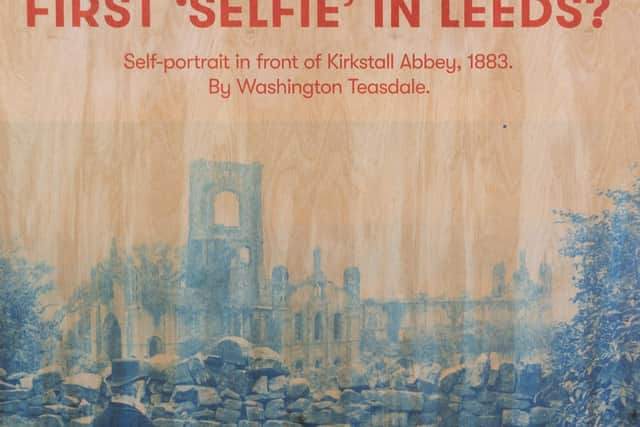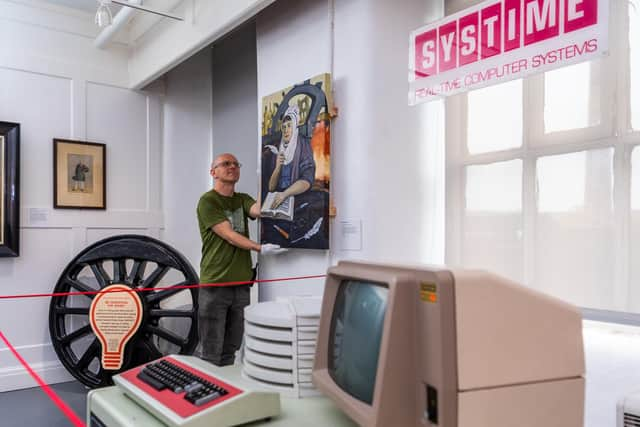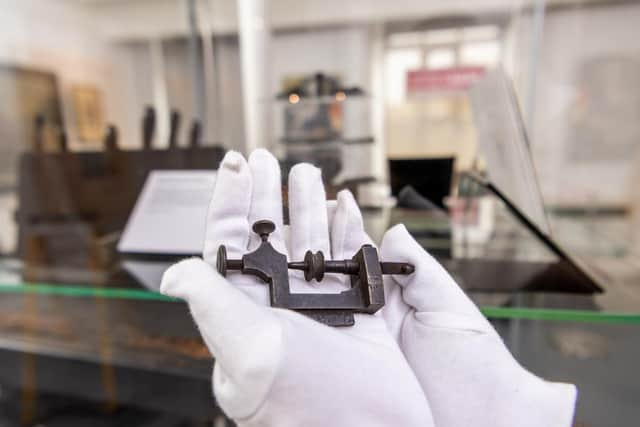New exhibition in Leeds unveils the city's first ever selfie


The selfie was taken in the ruins of Kirkstall Abbey by inventor Washington Teasdale more than 130 years ago.
Teasdale took the photo of himself in 1883 using a type of photography called cyanotype.
Advertisement
Hide AdAdvertisement
Hide AdIt is one of the earliest examples of someone both taking and appearing in a photo.


He worked in India as a civil engineer on the railways in the 1850s before returning to Leeds where he lived on Hyde Park Road.
Teasdale then chaired the Leeds Astronomical Society, became a member The Naturalist Society and founded the Leeds Photographic Society.
During this time he invested his own field microscope to study insects and capture detailed images of the moon through his telescope.
He also became an esteemed lecturer.


Advertisement
Hide AdAdvertisement
Hide AdChris Sharp, Leeds Museums and Galleries’ assistant community curator, said: “Washington Teasdale had a truly remarkable mind and seemed capable of reaching astonishing heights of inventiveness and ingenuity in whatever field he brought his prodigious intellect to bear on.
“Like many of the figures in this exhibition, despite his many notable accomplishments he is also far from a household name.
"Nevertheless, these unsung heroes of science and engineering have each helped put Leeds on the map in their own unique way, pushing the boundaries of science and engineering and leaving a lasting legacy that we’re proud to celebrate today.”
Teasdale died in 1903.


Also featured in the exhibition is Leeds University graduate Denys Fisher, who used his engineering background to produce Spirograph.
Advertisement
Hide AdAdvertisement
Hide AdDenys experimented with Mecanno parts to perfect his new game which won the ‘Toy of the Year’ award in 1967.
Elizabeth Beecroft, known as Betty, who took over the running of the historic Kirkstall Forge in 1778 is also part of the exhibition.
Betty revamped the forge, introducing new equipment and new business model and transforming it into a successful business.
Visitors will be also able to find out about the stories of John Smeaton, the ‘Father of Civil Engineering’ and designer of the Eddystone Lighthouse as well as Dr Brian Boffey, whose experiment with hot gelatine created the popular sweet Jelly Tots.
Advertisement
Hide AdAdvertisement
Hide AdA distinctive model of Scootacar, manufactured in the late 1950s by Scootacars Ltd, a division of the famous railway locomotive builder, the Hunslet Engine Company, is also on display.
Councillor Judith Blake, leader of Leeds City Council, said: “Leeds has a very long and proud history as a centre of innovation and progress stretching back hundreds of years.
“The pioneers who feature in this exhibition are among those who helped blaze a trail in a myriad of fields and industries, inspiring generations of scientists and engineers to follow in their footsteps and play their part in building the city we know today.”
Leeds to Innovation is open at Leeds Industrial Museum.